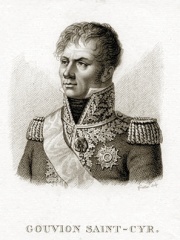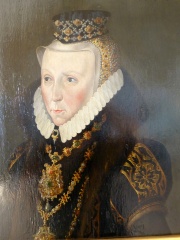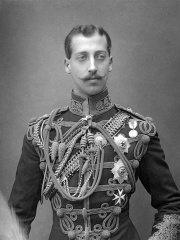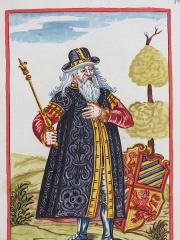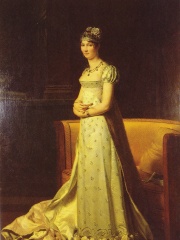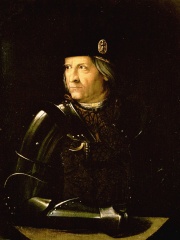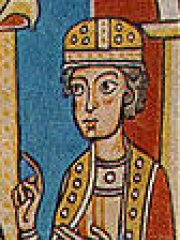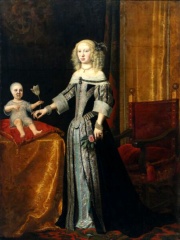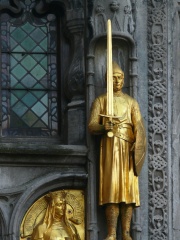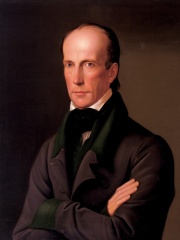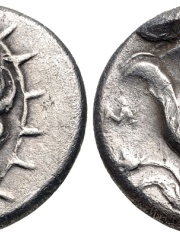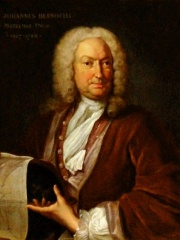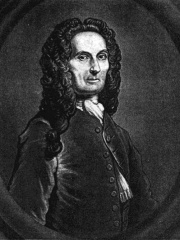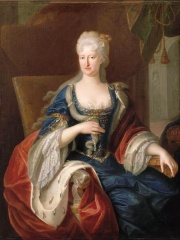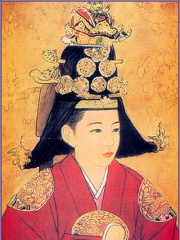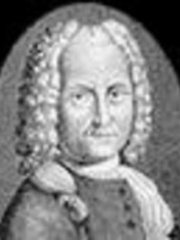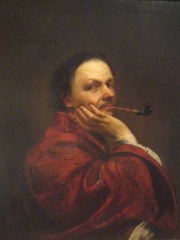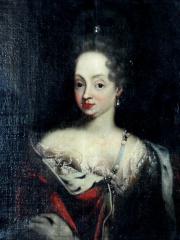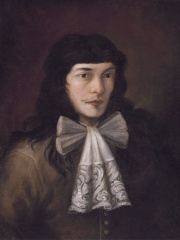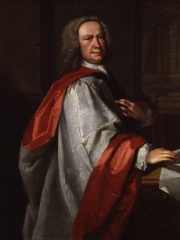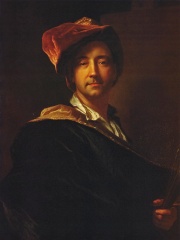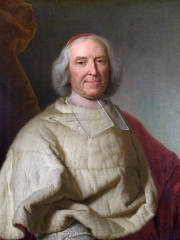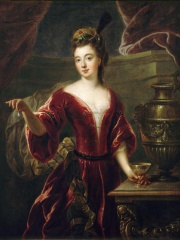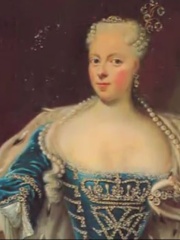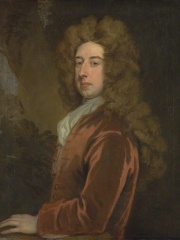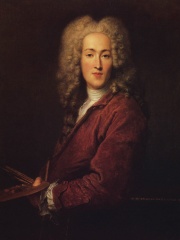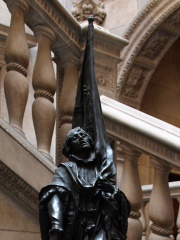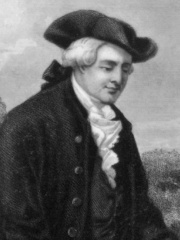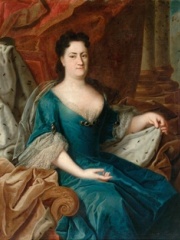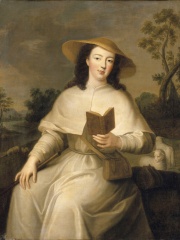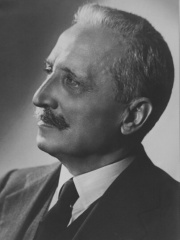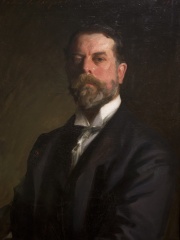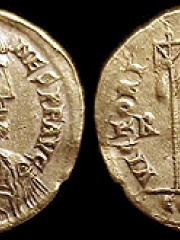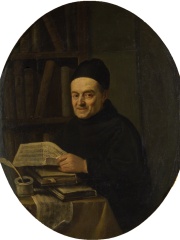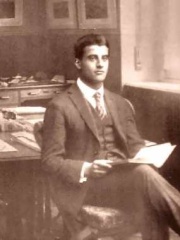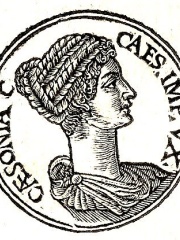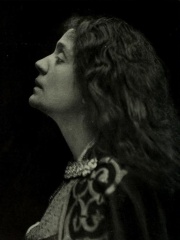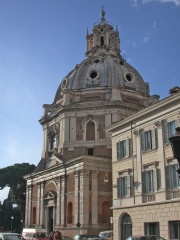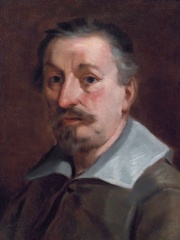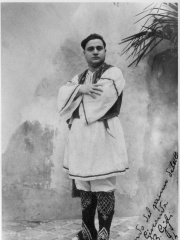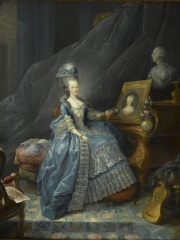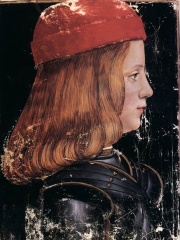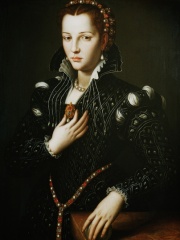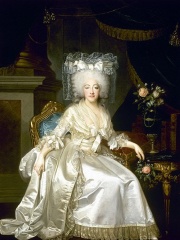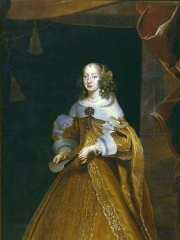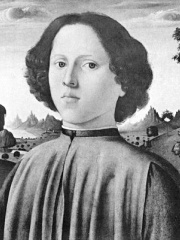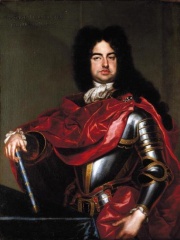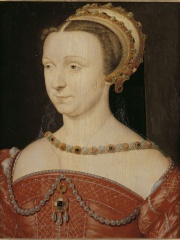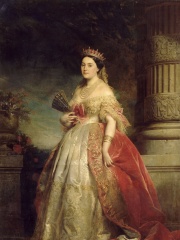NOBLEMAN
Anna Maria Luisa de' Medici
1667 - 1743
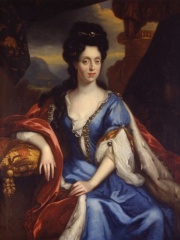
 Anna Maria Luisa de' Medici
Anna Maria Luisa de' Medici
Anna Maria Luisa de' Medici (11 August 1667 – 18 February 1743) was an Italian noblewoman who was the last lineal descendant of the main branch of the House of Medici. A patron of the arts, she bequeathed the Medicis' large art collection, including the contents of the Uffizi, Palazzo Pitti, and the Medici villas, which she inherited upon her brother Gian Gastone's death in 1737, and her Palatine treasures to the Tuscan state, on the condition that no part of it could be removed from "the Capital of the grand ducal State....[and from] the succession of His Serene Grand Duke." Anna Maria Luisa was the only daughter of Cosimo III de' Medici, Grand Duke of Tuscany, and Marguerite Louise d'Orléans, a niece of Louis XIII of France. On her marriage to Johann Wilhelm, Elector Palatine, she became Electress of the Palatinate, and, by patronising musicians, she earned for the contemporary Palatine court the reputation of an important music centre. Read more on Wikipedia
Her biography is available in 29 different languages on Wikipedia (up from 28 in 2024). Anna Maria Luisa de' Medici is the 229th most popular nobleman (down from 196th in 2024), the 1,113th most popular biography from Italy (down from 1,043rd in 2019) and the 29th most popular Italian Nobleman.
Anna Maria Luisa de' Medici was the daughter of Cosimo III, Grand Duke of Tuscany, and Marguerite Louise d'Orléans. She married her first cousin Louis Joseph, Dauphin of France, the eldest son of King Louis XV of France and Queen Marie Leszczyńska. Anna Maria Luisa is most famous for being the mother of the last Valois Dauphin, King Louis XVI of France.
Memorability Metrics
Page views of Anna Maria Luisa de' Medici by language
Among NOBLEMEN
Among noblemen, Anna Maria Luisa de' Medici ranks 229 out of 1,415. Before her are Laurent de Gouvion Saint-Cyr, Elizabeth of Denmark, Duchess of Mecklenburg, Prince Albert Victor, Duke of Clarence and Avondale, Guntram the Rich, Stéphanie de Beauharnais, and Ercole I d'Este, Duke of Ferrara. After her are Frederick VI, Duke of Swabia, Landgravine Elisabeth Amalie of Hesse-Darmstadt, Thierry, Count of Flanders, Archduke John of Austria, Memnon of Rhodes, and Sigismund, Archduke of Austria.
Most Popular Noblemen in Wikipedia
Go to all RankingsLaurent de Gouvion Saint-Cyr
1764 - 1830
HPI: 68.73
Rank: 223
Elizabeth of Denmark, Duchess of Mecklenburg
1524 - 1586
HPI: 68.73
Rank: 224
Prince Albert Victor, Duke of Clarence and Avondale
1864 - 1892
HPI: 68.73
Rank: 225
Guntram the Rich
920 - 973
HPI: 68.72
Rank: 226
Stéphanie de Beauharnais
1789 - 1860
HPI: 68.71
Rank: 227
Ercole I d'Este, Duke of Ferrara
1431 - 1505
HPI: 68.52
Rank: 228
Anna Maria Luisa de' Medici
1667 - 1743
HPI: 68.52
Rank: 229
Frederick VI, Duke of Swabia
1167 - 1191
HPI: 68.52
Rank: 230
Landgravine Elisabeth Amalie of Hesse-Darmstadt
1635 - 1709
HPI: 68.47
Rank: 231
Thierry, Count of Flanders
1100 - 1168
HPI: 68.41
Rank: 232
Archduke John of Austria
1782 - 1859
HPI: 68.39
Rank: 233
Memnon of Rhodes
380 BC - 333 BC
HPI: 68.39
Rank: 234
Sigismund, Archduke of Austria
1427 - 1496
HPI: 68.39
Rank: 235
Contemporaries
Among people born in 1667, Anna Maria Luisa de' Medici ranks 5. Before her are Jonathan Swift, Johann Bernoulli, Abraham de Moivre, and Maria Anna of Neuburg. After her are Queen Inhyeon, Antonio Lotti, Giovanni Girolamo Saccheri, Jan Kupecký, Louise of Mecklenburg-Güstrow, Alessandro Magnasco, and Johann Christoph Pepusch. Among people deceased in 1743, Anna Maria Luisa de' Medici ranks 3. Before her are Hyacinthe Rigaud, and André-Hercule de Fleury. After her are Louise Françoise de Bourbon, Duchess of Bourbon, Anne Sophie Reventlow, Spencer Compton, 1st Earl of Wilmington, Nicolas Lancret, Rafael Casanova, Princess Dorothea Wilhelmine of Saxe-Zeitz, Augustine Washington, Melusine von der Schulenburg, Duchess of Kendal, and Louise Adélaïde d'Orléans.
Others Born in 1667
Go to all RankingsJonathan Swift
WRITER
1667 - 1745
HPI: 80.20
Rank: 1
Johann Bernoulli
MATHEMATICIAN
1667 - 1748
HPI: 77.25
Rank: 2
Abraham de Moivre
MATHEMATICIAN
1667 - 1754
HPI: 75.96
Rank: 3
Maria Anna of Neuburg
COMPANION
1667 - 1740
HPI: 72.05
Rank: 4
Anna Maria Luisa de' Medici
NOBLEMAN
1667 - 1743
HPI: 68.52
Rank: 5
Queen Inhyeon
COMPANION
1667 - 1701
HPI: 68.23
Rank: 6
Antonio Lotti
COMPOSER
1667 - 1740
HPI: 67.22
Rank: 7
Giovanni Girolamo Saccheri
PHILOSOPHER
1667 - 1733
HPI: 66.77
Rank: 8
Jan Kupecký
PAINTER
1667 - 1740
HPI: 64.45
Rank: 9
Louise of Mecklenburg-Güstrow
COMPANION
1667 - 1721
HPI: 63.80
Rank: 10
Alessandro Magnasco
PAINTER
1667 - 1749
HPI: 63.61
Rank: 11
Johann Christoph Pepusch
COMPOSER
1667 - 1752
HPI: 62.91
Rank: 12
Others Deceased in 1743
Go to all RankingsHyacinthe Rigaud
PAINTER
1659 - 1743
HPI: 71.52
Rank: 1
André-Hercule de Fleury
POLITICIAN
1653 - 1743
HPI: 68.55
Rank: 2
Anna Maria Luisa de' Medici
NOBLEMAN
1667 - 1743
HPI: 68.52
Rank: 3
Louise Françoise de Bourbon, Duchess of Bourbon
POLITICIAN
1673 - 1743
HPI: 67.28
Rank: 4
Anne Sophie Reventlow
COMPANION
1693 - 1743
HPI: 65.17
Rank: 5
Spencer Compton, 1st Earl of Wilmington
POLITICIAN
1673 - 1743
HPI: 64.14
Rank: 6
Nicolas Lancret
PAINTER
1690 - 1743
HPI: 63.54
Rank: 7
Rafael Casanova
POLITICIAN
1660 - 1743
HPI: 62.45
Rank: 8
Princess Dorothea Wilhelmine of Saxe-Zeitz
NOBLEMAN
1691 - 1743
HPI: 61.93
Rank: 9
Augustine Washington
POLITICIAN
1694 - 1743
HPI: 61.11
Rank: 10
Melusine von der Schulenburg, Duchess of Kendal
POLITICIAN
1667 - 1743
HPI: 60.98
Rank: 11
Louise Adélaïde d'Orléans
RELIGIOUS FIGURE
1698 - 1743
HPI: 60.77
Rank: 12
In Italy
Among people born in Italy, Anna Maria Luisa de' Medici ranks 1,113 out of 5,161. Before her are Enrico De Nicola (1877), John Singer Sargent (1856), Maurizio Pollini (1942), Joannes (400), Giovanni Battista Martini (1706), and Ercole I d'Este, Duke of Ferrara (1431). After her are Pier Giorgio Frassati (1901), Milonia Caesonia (7), Eleonora Duse (1858), Antonio da Sangallo the Younger (1484), Francesco Albani (1578), and Beniamino Gigli (1890).
Others born in Italy
Go to all RankingsEnrico De Nicola
POLITICIAN
1877 - 1959
HPI: 68.56
Rank: 1,107
John Singer Sargent
PAINTER
1856 - 1925
HPI: 68.56
Rank: 1,108
Maurizio Pollini
COMPOSER
1942 - 2024
HPI: 68.55
Rank: 1,109
Joannes
POLITICIAN
400 - 425
HPI: 68.54
Rank: 1,110
Giovanni Battista Martini
MUSICIAN
1706 - 1784
HPI: 68.53
Rank: 1,111
Ercole I d'Este, Duke of Ferrara
NOBLEMAN
1431 - 1505
HPI: 68.52
Rank: 1,112
Anna Maria Luisa de' Medici
NOBLEMAN
1667 - 1743
HPI: 68.52
Rank: 1,113
Pier Giorgio Frassati
RELIGIOUS FIGURE
1901 - 1925
HPI: 68.52
Rank: 1,114
Milonia Caesonia
POLITICIAN
7 - 41
HPI: 68.50
Rank: 1,115
Eleonora Duse
ACTOR
1858 - 1924
HPI: 68.48
Rank: 1,116
Antonio da Sangallo the Younger
ARCHITECT
1484 - 1546
HPI: 68.48
Rank: 1,117
Francesco Albani
PAINTER
1578 - 1660
HPI: 68.47
Rank: 1,118
Beniamino Gigli
SINGER
1890 - 1957
HPI: 68.47
Rank: 1,119
Among NOBLEMEN In Italy
Among noblemen born in Italy, Anna Maria Luisa de' Medici ranks 29. Before her are Maria Theresa of Savoy (1756), Maximilian Sforza (1493), Lucrezia de' Medici, Duchess of Ferrara (1545), Marie Joséphine of Savoy (1753), Luisa of Naples and Sicily (1773), and Ercole I d'Este, Duke of Ferrara (1431). After her are Archduke John of Austria (1782), Eleonora Gonzaga (1630), Gioffre Borgia (1481), Antonio Farnese, Duke of Parma (1679), Anna d'Este (1531), and Mathilde Bonaparte (1820).
Maria Theresa of Savoy
1756 - 1805
HPI: 70.09
Rank: 23
Maximilian Sforza
1493 - 1530
HPI: 70.01
Rank: 24
Lucrezia de' Medici, Duchess of Ferrara
1545 - 1561
HPI: 69.75
Rank: 25
Marie Joséphine of Savoy
1753 - 1810
HPI: 69.28
Rank: 26
Luisa of Naples and Sicily
1773 - 1802
HPI: 69.24
Rank: 27
Ercole I d'Este, Duke of Ferrara
1431 - 1505
HPI: 68.52
Rank: 28
Anna Maria Luisa de' Medici
1667 - 1743
HPI: 68.52
Rank: 29
Archduke John of Austria
1782 - 1859
HPI: 68.39
Rank: 30
Eleonora Gonzaga
1630 - 1686
HPI: 68.26
Rank: 31
Gioffre Borgia
1481 - 1517
HPI: 67.78
Rank: 32
Antonio Farnese, Duke of Parma
1679 - 1731
HPI: 67.11
Rank: 33
Anna d'Este
1531 - 1607
HPI: 66.75
Rank: 34
Mathilde Bonaparte
1820 - 1904
HPI: 66.74
Rank: 35
